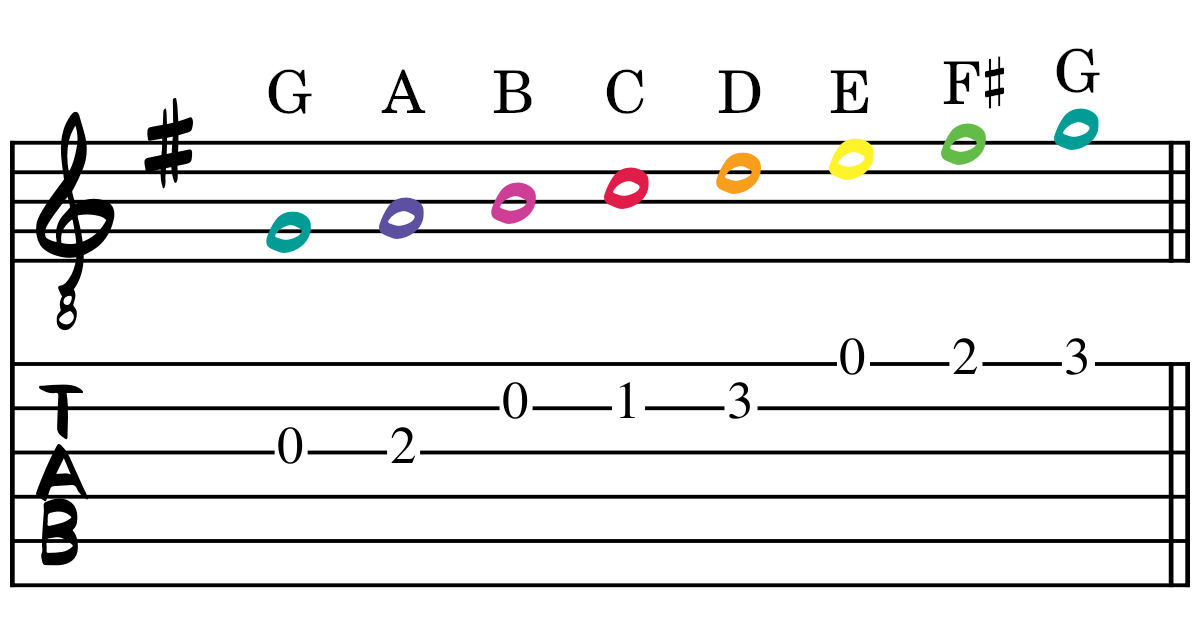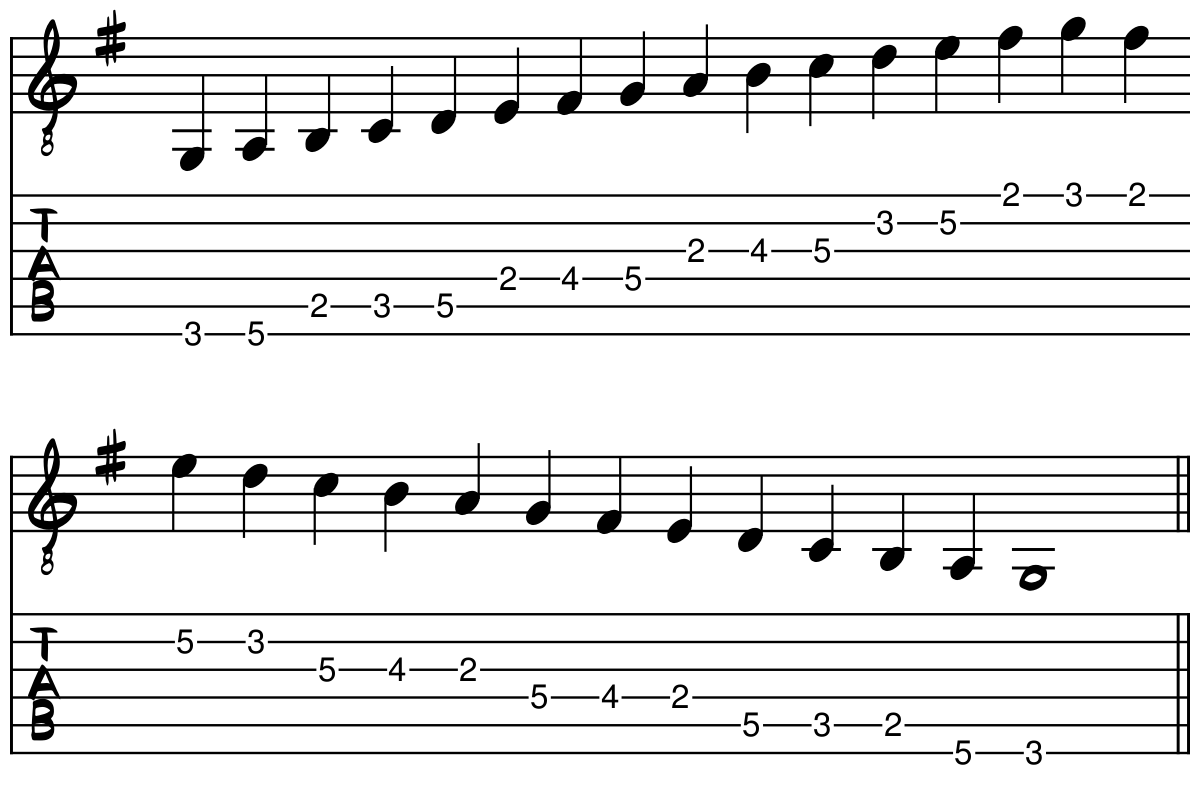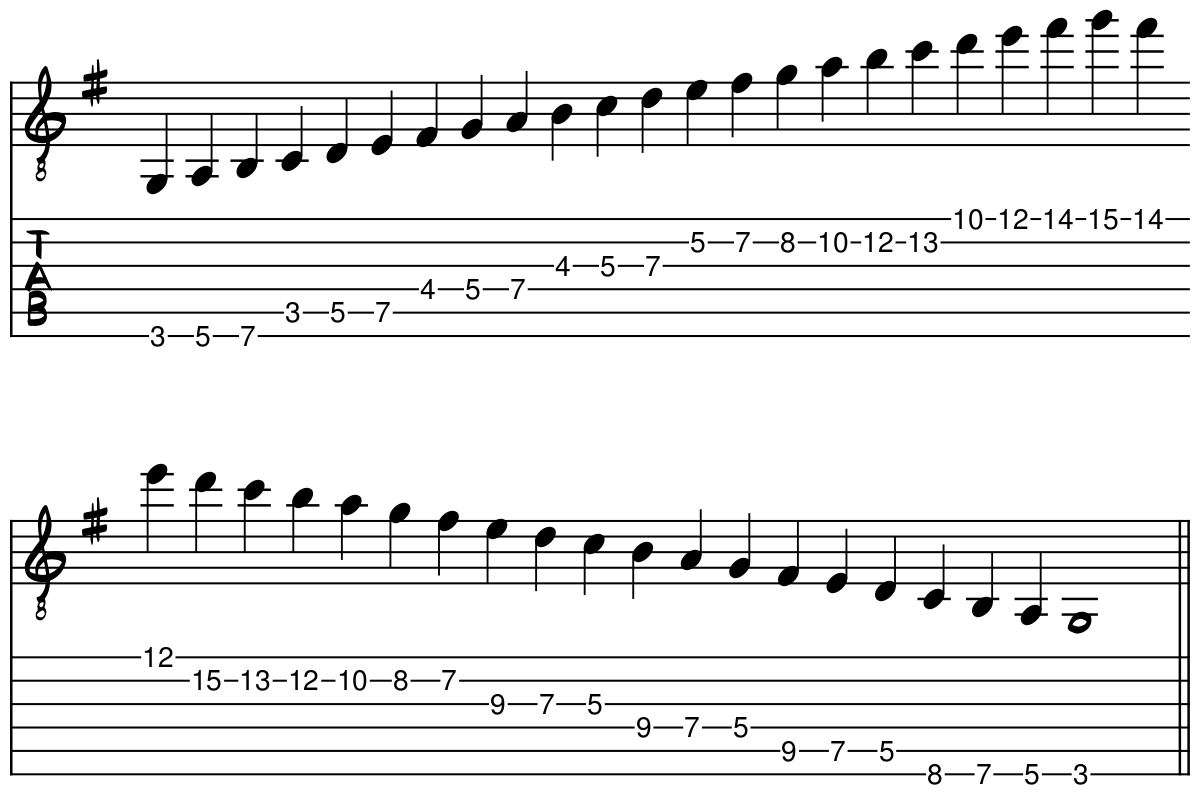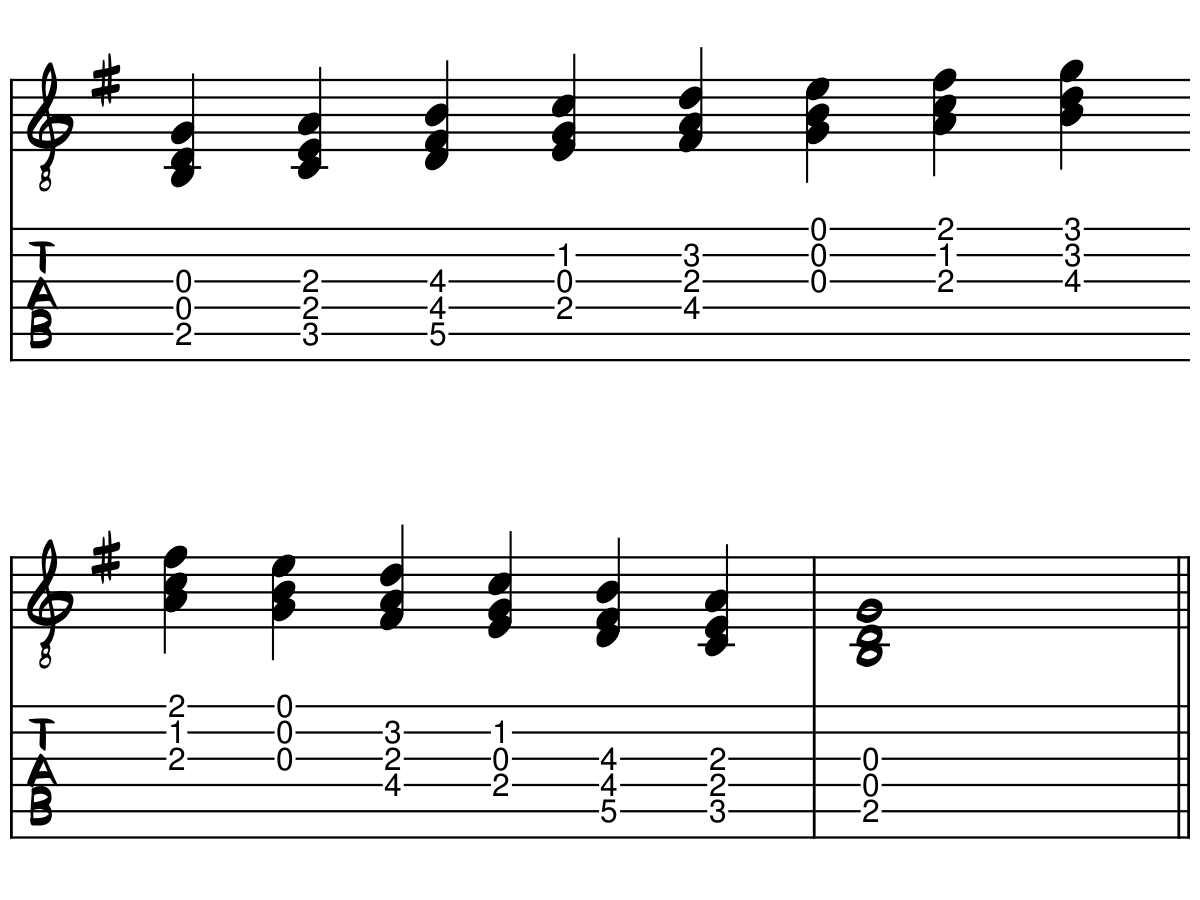Learn the best way to play the G Major Scale on the guitar with this guide.
Here are all the positions and notes of the G Major guitar scale, which can be played over one, two or even three octaves.
We'll learn the notes of the G major scale and how to play it easily for fingerstyle guitar, both ascending and descending.
I'll share with you the best fingering pattern to play this scale at high speeds and give all your fingers a workout.
What Is The G Major Scale?
The G major scale, or the G scale for short, consists of the notes G, A, B, C, D, E and F♯. It is one of the most common guitar scales in Western music, and in guitar music in general.
When we name or play the notes of the scale in the same order as in the alphabet, we're using the ascending scale pattern.
An ascending scale refers to a scale that is played from a lower pitch to a higher pitch. It starts from the root note and moves upward to the next octave of the same note. This is generally how scales are played.
On the other hand, a descending scale is played from a higher pitch to a lower pitch. It starts from the root note at a higher octave and goes down to the same note at a lower octave. So, if we take the G major scale, the notes are in the following order: G, F♯, E, D, C, B, and A.
How To Play The One Octave G Major Scale On The Guitar
To play the G Major scale over one octave, you can start with the third string open, which is the note G.
Here is what the ascending G Major Scale looks like on the guitar over one octave, played in first position.

To give your fingers a workout, you'll want to play the ascending G major scale (the sequence of notes played from lowest to highest) followed by the descending G major scale (the high note to the low note).
Let's now look at how to play the G major scale over multiple octaves.
How To Play the Two Octave G Major Scale On Guitar
The most common way to play the G Major scale over two octaves is entirely in the second position. You can play this scale in second position ascending and descending, without having to move your hand to any other position.

The advantage of this finger pattern is that the fretting hand doesn't need to change position.
However, the problem with this fingering pattern is the uneven number of notes per string. Sometimes there are two notes per string, and other times there are three.
If playing this scale fingerstyle, you will be alternating between your index and middle fingers. You will start out playing index, then middle, but afterwards the finger pattern becomes unpredictable.
So, sometimes you will need to use the i and m fingers, or a combination of m,i,m or i,m,i fingers.
An unpredictable or uneven finger pattern can cause problems when you want to play fast fingerstyle guitar scales.
The solution to fast fingerstyle scales is to use three note per string guitar finger pattern, which we will see in the next section.
How To Play the Three Octave G Major Scale On Guitar
To play the G major scale over three octaves, you have to cover basically the whole register of the guitar. Thus, it's necessary to make a change of position in order to reach the notes of the octave above.
The best way to play the three octave G Major scale with fingerstyle guitar is using a three note per string pattern. In this fingering, we change positions on the second string. Play the scale ascending and descending, with the following fingering pattern:

To play the G Major scale over three octaves on fingerstyle guitar, you can use the fingering pattern p,i,m or a,m,i.
Since the highest fret is only 15, you can play this comfortably even on an acoustic guitar that has a large body.
Notice also the four notes at the very end of the scale, on the largest string. You can choose to play the very last note with your thumb, if using the a,m,i pattern.
How To Play the G Major Chordal Scale
The chordal scale involves playing chords that use every note of the G Major scale. In fingerstyle guitar, because we are able to pluck multiple strings, we can take advantage of this to play chords.
Triads In G Major
To play the G major chord scale, we create triads out of the notes in the scale, using the interval of a third. This interval consists of skipping one note in the scale and landing on the next.
This means that for each note in the scale, we stack one note that is a third interval away, and likewise for the next note. So, the first chord we will create is the G major chord.
Starting with the root note G, we skip the next note (A) and land on the following note (B). Then, we skip the fourth note (C) and select the fifth note. Our first chord contains the notes G, B and D which is the G Major chord.
However for fingerstyle guitar, we don't use the root position of the chord. In fingerstyle guitar, we take a unique approach to chord voicings, opting for the first inversion.
Here is what that looks like in the context of the G Major guitar scale.

Here, in the first chord of the scale which is the G Major chord, rather than starting with the root note G, we begin with the third, or B. Similarly, in the A minor chord, we start the chord on the note C instead of the root note A.
Ultimately, this approach to chord voicings in fingerstyle guitar lets us simplify the chord shapes and reduce stretches.
You will learn more about simplifying chords in the online course, Play Fingerstyle Guitar Now!


